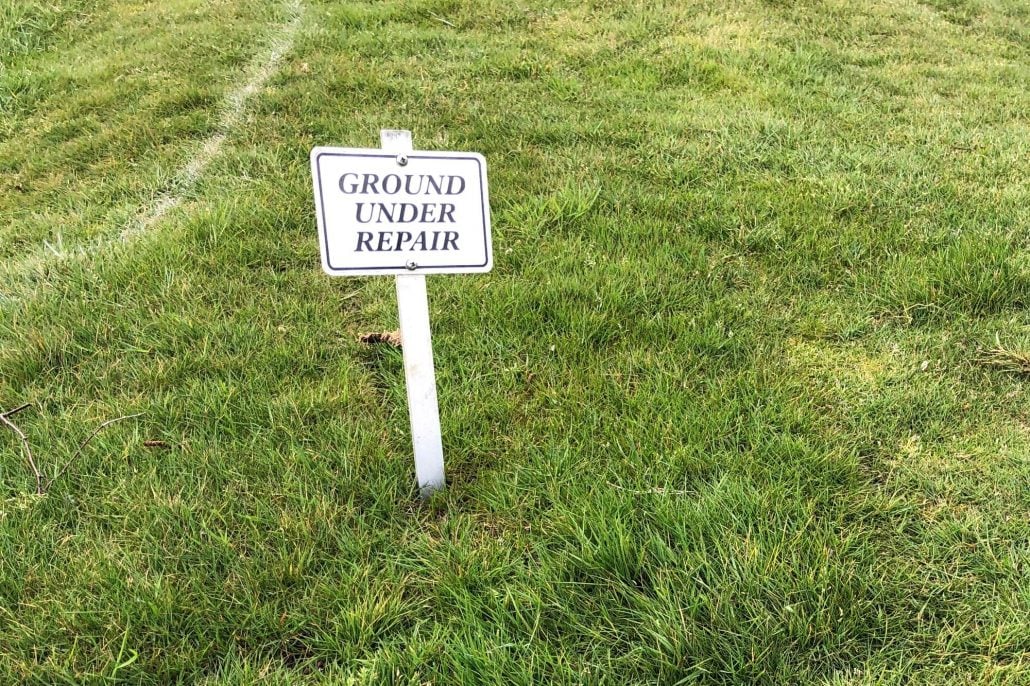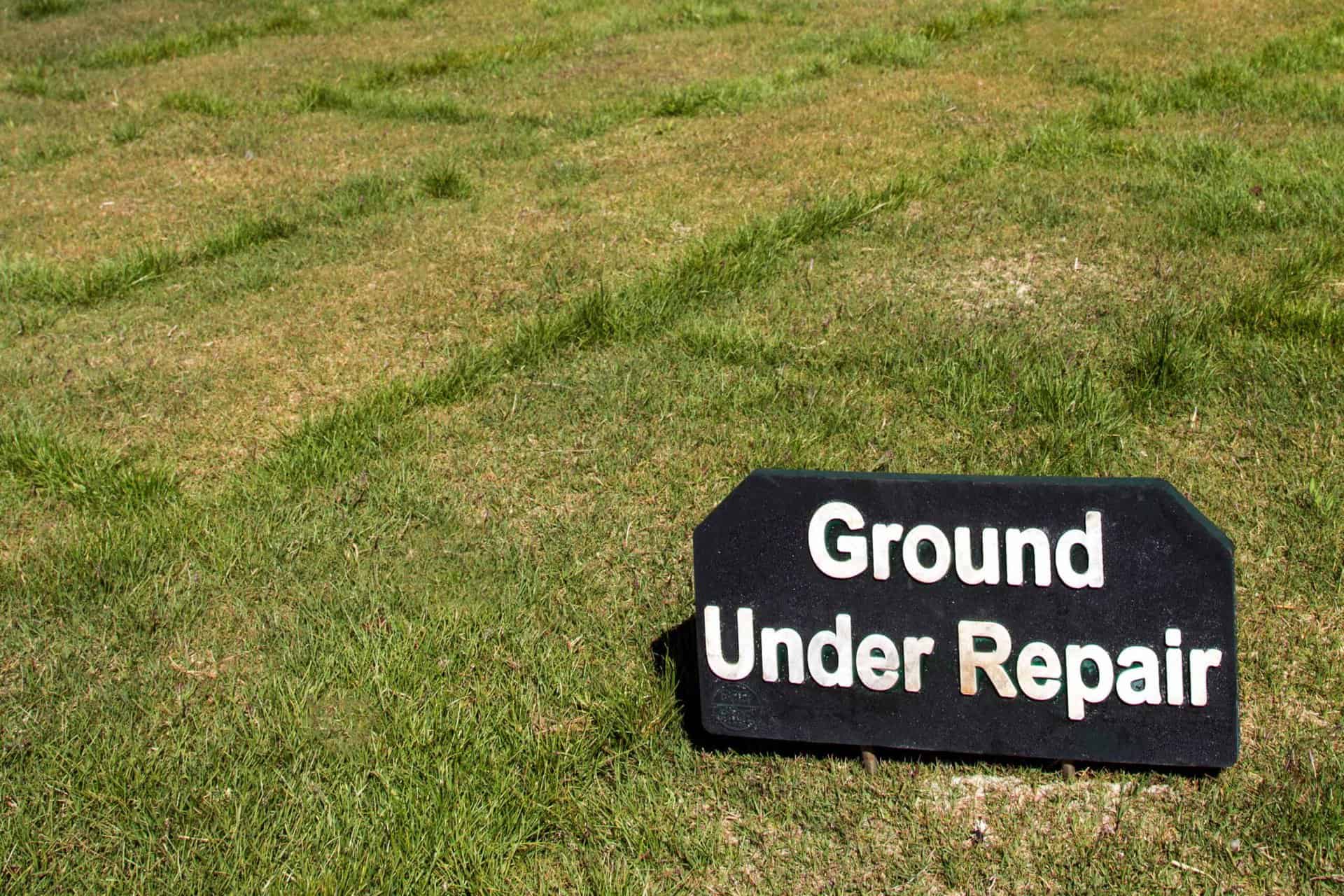What’s the most common form of relief taken by golfers during a round? Stroke and distance would be high up the list, as would dropping from a penalty area.
But very prominent too – and one that doesn’t cost us a shot – would be taking relief from ground under repair.
Most of you reading this will have benefited from it time and time again. Do you know everything about it, though? Are you taking it correctly?
There will be a couple of things in this round up of ground under repair in golf that are bound to surprise you. So let’s dive in and reveal all…

What is ground under repair?
It’s an abnormal course condition – a situation that isn’t what you’d expect to see in the normal playing of the game and Rule 16.1 says you are allowed relief.
Ground under repair can be any part of a course a committee defines it to be. It doesn’t actually matter if it is marked or not.
Most of the time it will be, though, usually by stakes or painted lines, and that defined area includes all the ground inside the edges. It also includes any grass, bushes, trees, or natural objects that are growing.
There are also some givens with GUR and it doesn’t matter in these cases whether a committee has ruled or not.
These includes holes made when setting up or maintaining the course (but not aeration holes) as well as grass cuttings, leaves or other materials that are piled for later removal, and any animal habitats that are near enough to a ball that a stroke or stance might damage it.
Before you get too excited, that doesn’t include animals that are also loose impediments such as worms or insects.
How do you take relief?
Find the nearest point of complete relief from the ground under repair that is no nearer the hole. Take that as your reference point and drop in a one club relief area.
Advertisement
If your ball is in the general area, the relief area must be in the same part of the course. The same applies to a bunker, although you can take the ball outside the trap for the price of a penalty stroke.
If there is ground under repair on a green, you are also allowed line of play relief. On the putting surface, the relief area can be on the green but also in the general area.
I’ve got a bad lie can I drop it again?
I think you know the answer to this one. You cannot. A clarification to Rule 16.1 says “if a player receives better conditions affecting the stroke in taking relief under Rule 16.1, this is the player’s good fortune.
“There is nothing in Rule 16.1 that requires them to maintain identical conditions after relief is taken.”
If things don’t go your way when taking relief from ground under repair, you’ve just got to suck it up and get on with it.

What if I can’t find my ball?
Don’t worry. This is covered by Rule 16.1e. As long as you know, or are virtually certain, your ball has ended up in an area of ground under repair, you can take free relief.
Take the estimated point where the ball last crossed the edge of the abnormal course condition and use that as the spot to find the nearest point of complete relief.
You’ve got a one club relief area, no closer to the hole, in which to drop.
Just a note of caution. Complete relief means exactly what it says on the tin. You can’t stand in ground under repair to hit a shot, even if your ball isn’t within it. Your area of intended swing can’t touch the ground under repair, either. In each case, failing to comply with this will see you given the general penalty. That’s two shots in stroke play and loss of hole in match play.
Advertisement
Do you have to take relief from ground under repair?
Lots of club committees and members get confused about this one. At first it seems obvious. It’s usually ground under repair for a reason – namely the greenkeepers or competition organisers don’t want you to hit from it.
But you also have the option to play your ball as it lies. If your club is adamant they want to protect that area they should make it a No Play Zone. When that happens you are compelled to take relief from the area.
Clubs can also bring in a drop zone and make that mandatory where there is an area of ground under repair they don’t want you to play from but don’t necessarily want to define as a No Play Zone.
Sometimes ground under repair isn’t always what you think it is
Tractor ruts – they just have to be GUR, don’t they? No. They are not ground under repair by default. Don’t take my word for it, it is enshrined in a clarification to the definition.
Committees, it says, are “justified in declaring a deep rut to be ground under repair” but it’s not automatic. Make sure to study the Local Rules before you start picking your ball up.
Old hole plugs are another situation where you would automatically think about taking relief but they are not automatically GUR if it is sunk below the putting green surface.
It’s the same for fallen trees or tree stumps. They need to be unearthed, or cut up for later removal, before they qualify automatically. Again, scan the Local Rules to see if the club has specified any relief for such areas.
Advertisement
Have your say
What do you think about these ground under repair rules? Why not let us know by leaving a comment on X.
Advertisement
